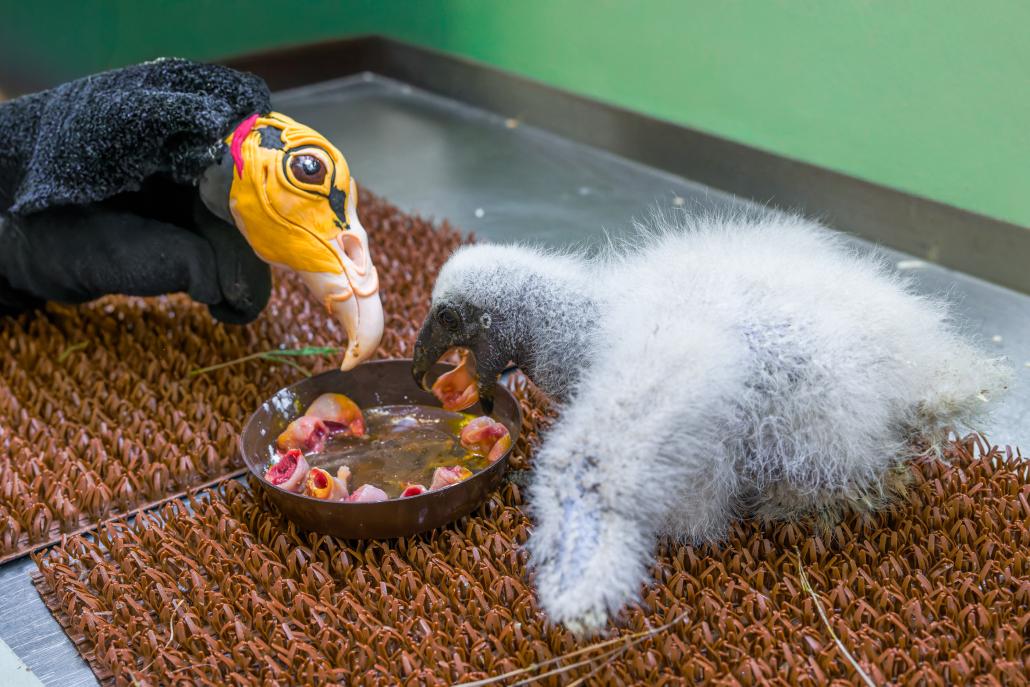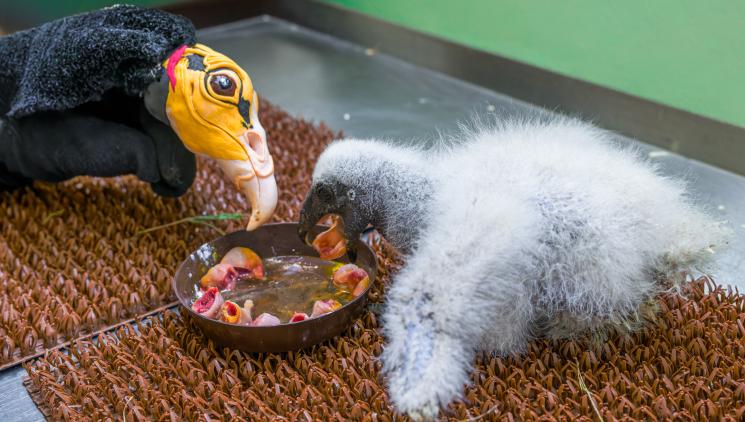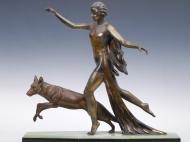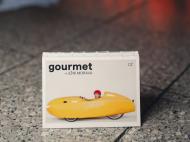“To avoid so-called imprinting, we try to minimize the direct contact of the chick with humans. If the chick imprints on a human, it will have problems forming a partner relationship in the future,” says bird breeding curator of Prague Zoo Antonín Vaidl. “Thanks to a mannequin imitating an adult condor, we can raise the individual as naturally as possible with the right habits.”
“Mannequins” that provide food must bear distinctive signs of the parents. These can include, for example, a prominent throat, a large colorful beak, a red eye, or, as in this case, a typically bald yellow head. The Prague Zoo has previously used a “mannequin” in a similar way for the chick of the rhinoceros hornbill, the Javanese argus pheasant, or the scavenger vulture. This is the first time they are raising a lesser condor in this manner.
The twenty-day-old condor is currently enjoying stripped mouse pups, and over time it will start accepting them with fur. So far, everything is going well, but the breeders remain cautious. There is still a long way to go for successful breeding.

Photo: If everything goes well, the breeders will take care of the lesser condor for several more months. Photo by Petr Hamerník, Prague Zoo
Condors, together with vultures, face many threats in the wild – often associated with human activities. The main threats include poisoning from ingesting the meat of dead livestock contaminated with hazardous drugs or heavy metals. Birds also die as a result of electric shock or collisions with vehicles. In some areas, a lack of food and habitat fragmentation are also problematic.
The lesser condor from Central and South America has been bred at Prague Zoo since 2014. The first successful natural breeding occurred here in 2022. People can find lesser condors in the aviary near the southern entrance in the lower part of the area.
Video: Feeding the chick of the lesser condor. Video by Nikola Dostálková, Prague Zoo







